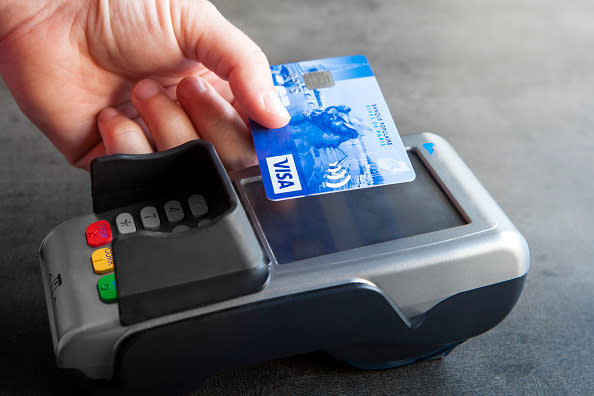Will buying a coffee using a contactless card give you a nasty shock at the end of the month?

The number of people using contactless payments continues to grow – but a side-effect could be that spending is also on the rise.
One in four young people say they are aware that their spending has increased as it is easier to pay for a cup of coffee or a treat using a contactless credit or debit card rather than having to think if they have enough cash on them to afford it there and then.
With 73% of Britons in possession of a contactless credit or debit card, research for 118 118 Money shows that the draw of using this new payment method is for smaller ticket items that can potentially add up to a lot at the end of the month.
However, it seems this increased expenditure may only be an issue for generation Y, with older age groups not seeing as big a change in their finances.
Of those surveyed who own a contactless card, 93% of people aged 55 and above said that having contactless has made no difference to their spending habits.
On top of that, 6% of 45-54 year olds actually think their spending has decreased since getting contactless.
The top 5 products and services Brits with contactless are more likely to buy with these cards:
Product or service | Percentage using contactless payment |
Coffee, tea or other hot drinks | 33% |
Eating out (e.g. lunch, evening meal or cafe) | 28% |
Toiletries (e.g. shampoo, shower gel, toothpaste etc.) | 25% |
Transport tickets (e.g. bus, train tickets) | 20% |
Newspapers and magazines | 18% |
Mark Burgess, chief operating officer at 118 118 Money, said it was unsurprising that the younger generation were the biggest contactless spenders.
He warned: “With the majority of us using contactless, it seems that our main expenditure is on the small things rather than larger ticket items.
“However, we still need to be cautious that these little spends don’t add up to an unexpected bill at the end of the month.”
Mr Burgess urged consumers to regularly check their balances and accounts to ensure they keep a close eye on the outgoings.
According to the UK Cards Association:
There are a total of 100.1m contactless cards in issue in the UK. These cards are split between debit (68.7m) and credit/charge cards (31.5m). This is an increase of 1.2% on the previous month and 28.5% over the year.
£2,801.3m was spent in the UK in the month using a contactless card. This is an increase of 15.6% on the previous month and an increase of 201.3% per the year. The value is split between debit (£2,473.3m) and credit / charge cards (£328.1m).
312.6m contactless transactions were made in October 2016 (latest figures). This is an increase of 13.6% on the previous month and 159.4% over the year. The volume is split between debit (276.3m) and credit / charge cards (36.2m).
The average contactless transaction was for £8.96. This is split by £8.95 on a debit card and £9.05 on a credit / charge card.

 Yahoo Finance
Yahoo Finance 
